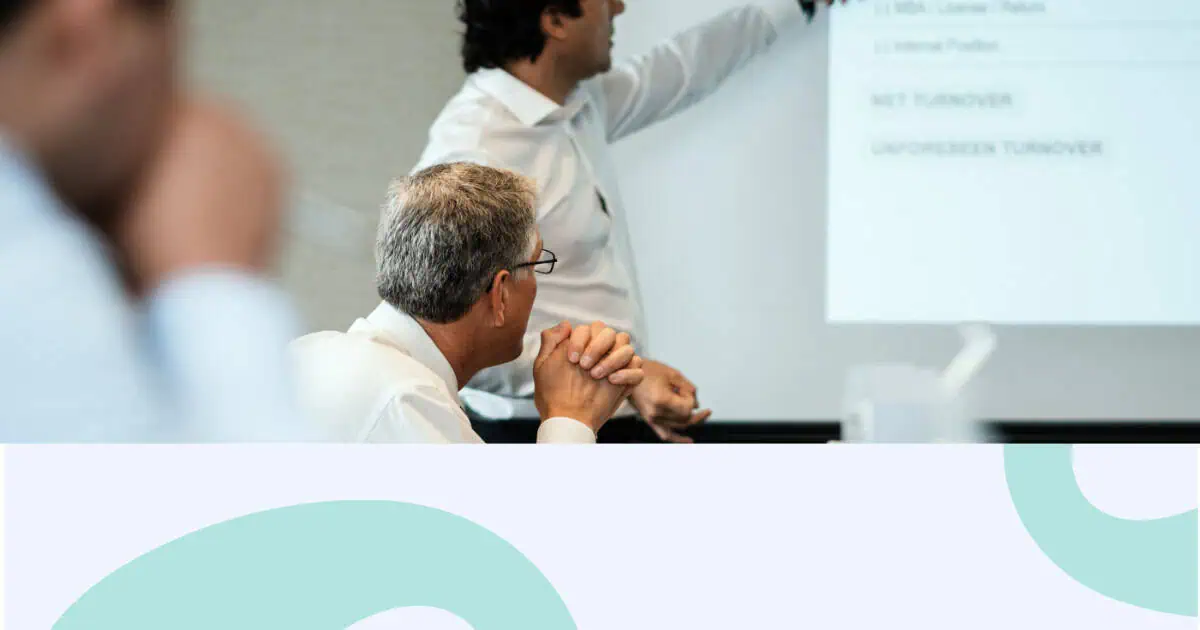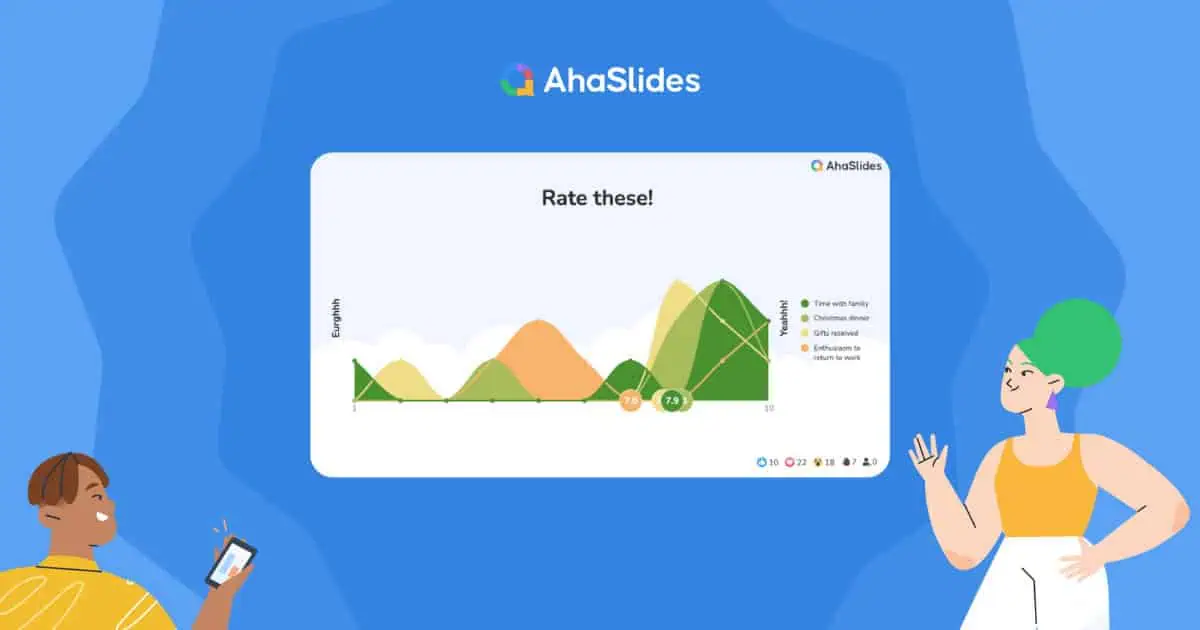У данашњој економији пажње, тренираној ТикТоком, имате око 8 секунди да привучете нечију пажњу - мање времена него златна рибица. Ако вам то звучи застрашујуће за презентацију од 5 минута, ево добрих вести: кратке презентације су ваше тајно оружје.
Док други лутају кроз презентације од 60 слајдова гледајући како им се очи застакле, ви ћете пренети фокусирану поруку која ће остати упамћена. Без обзира да ли се обраћате инвеститорима, обучавате удаљени тим, презентујете резултате истраживања или идете на разговор за посао из снова, савладавање формата од 5 минута није само практично – оно је одлучујуће за вашу каријеру.
Овај водич се ослања на науку о презентацијама, увиде професионалних тренера који годишње држе стотине сесија и проверене технике TED говорника како би вам помогао да креирате презентације које ангажују, убеђују и остављају трајан утисак.
Преглед садржаја
Зашто петоминутне презентације захтевају другачији приступ
истраживање Истраживање неуронаучника Џона Медине показује да пажња публике значајно опада сваких 10 минута током традиционалних презентација. У виртуелним окружењима, тај прозор се смањује на само 4 минута. Ваша презентација од 5 минута се савршено уклапа у ову идеалну тачку ангажовања – али само ако је правилно дизајнирате.
Улог је већи код кратких презентација. Свака реч је важна. Сваки слајд је важан. Нема времена за попуњавање, нема места за дигресије и нема толеранције за техничке грешке. Истраживања у индустрији показују да 67% професионалаца сада преферира концизне, фокусиране презентације у односу на дугачке — ипак, већина презентера и даље приступа кратким предавањима као сажетим верзијама дугих, што ретко функционише.
Како направити 5-минутну презентацију
Корак 1: Изаберите своју тему са хируршком прецизношћу

Највећа грешка коју презентери праве? Покушавају да покрију превише теме. Ваша петоминутна презентација треба да се бави једна основна идеја— не три, чак ни два. Замислите то као ласер, а не као рефлектор.
Ваша тема мора да прође овај тест од четири дела:
- Једна фокусна тачка: Можете ли то објаснити у једној реченици? Ако не, прецизније објасните.
- Релевантност публике: Да ли решава проблем са којим се активно суочавају? Прескочите информације које већ знају.
- Једноставност: Можете ли то објаснити без сложене позадине? Сачувајте сложене теме за дуже формате.
- Ваша стручност: Држите се тема које добро познајете. Време за припрему је ограничено.
За инспирацију, размотрите ове проверене теме од 5 минута у различитим контекстима:
- Професионална подешавања: 3 стратегије засноване на подацима за смањење одлива купаца, Како алати вештачке интелигенције мењају наш ток рада, Зашто наши резултати за трећи квартал сигнализирају стратешки заокрет
- Обука и учење и развој: Једна навика која трансформише учинке удаљеног тима, Психологија која стоји иза оцена ангажованости запослених, Како дати повратне информације које заправо побољшавају понашање
- Академски контексти: Кључни налази мог истраживања одрживости, Како друштвене мреже утичу на доношење одлука код адолесцената, Етика генетског уређивања у три реална сценарија
Корак 2: Дизајнирајте слајдове који појачавају (а не одвлаче пажњу)
Ево једне истине која разликује аматерске од професионалних водитеља: Ви сте презентација, а не ваши слајдови. Слајдови треба да подржавају вашу нарацију, а не да је замењују.
Питање о броју слајдова
Истраживања стручњака за презентације сугеришу 5-7 слајдова за говор од 5 минута - отприлике један слајд по минуту са временом за увод и завршетак. Међутим, TED говорници понекад користе 20 слајдова који се брзо мењају (10-15 секунди сваки) како би одржали визуелни замах. Оно што је важније од квантитета јесте јасноћа и сврха.
Принципи дизајна садржаја
- Минимални текст: Максимално 6 речи по слајду. Ваш сценарио од 700 речи треба да буде изговорен, а не приказан.
- Визуелна хијерархија: Користите величину, боју и бели простор да бисте усмерили пажњу на оно што је најважније.
- Визуелизација података: Једна убедљива статистика или графикон по слајду је бољи од пасуса са објашњењима.
- Доследан дизајн: Исти фонтови, боје и распореди одржавају професионализам.
Про савет: Учините своју презентацију интерактивном користећи анкете уживо, функције питања и одговора или брзе квизове. Ово трансформише пасивне гледаоце у активне учеснике и драматично побољшава памћење информација. Алати попут AhaSlides-а омогућавају вам да без проблема уградите ове функције, чак и у форматима од 5 минута.
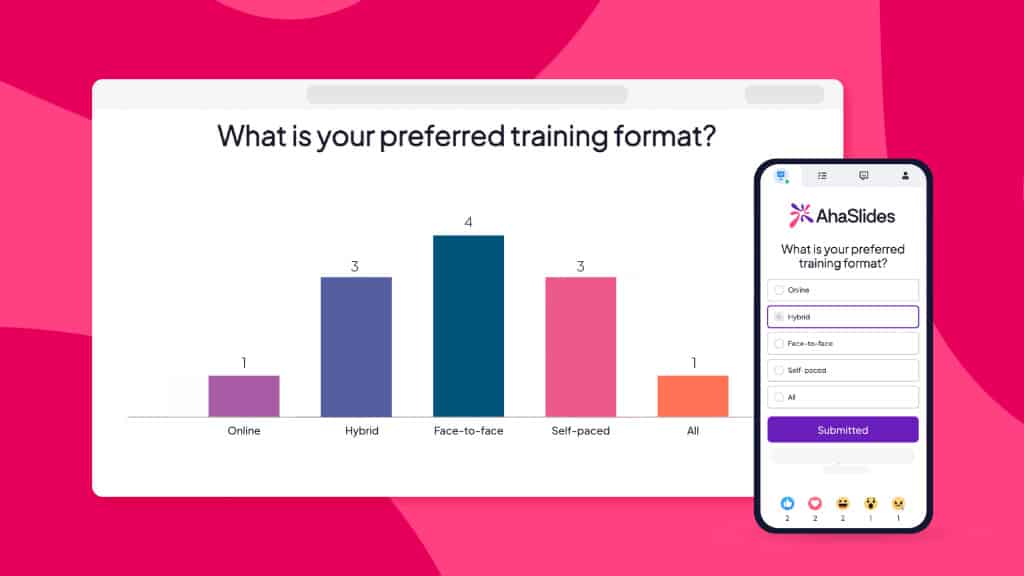
Корак 3: Савладајте тајминг са војничком прецизношћу
У петоминутној презентацији, свака секунда има свој задатак. Нема простора за лутање или исправљање грешака. Професионални говорници прате ову проверену структуру:
Доказана формула за расподелу времена
- 0:00-0:30 – Уводна закачка: Привуците пажњу запањујућом чињеницом, провокативним питањем или убедљивом причом. Прескочите дугачке уводе.
- 0:30-1:30 – Проблем: Утврдите зашто би ваша публика требало да буде заинтересована. Који изазов ваша тема решава?
- 1:30-4:30 – Ваше решење/увид: Ово је ваш основни садржај. Изнесите 2-3 кључне тачке са поткрепљеним доказима. Избаците све што није битно.
- 4:30-5:00 – Закључак и позив на акцију: Појачајте своју главну поруку и реците публици тачно шта треба даље да ради.
Подешавање виртуелне презентације
Презентујете на даљину? Укључите тренутке ангажовања свака 4 минута (према Мединином истраживању). Користите анкете, тражите одговоре у ћаскању или постављајте реторичка питања. Проверите угао камере (ниво очију), обезбедите јако осветљење спреда и претходно тестирајте квалитет звука. Виртуелна публика је склонија ометању, тако да интеракција није опционална - она је неопходна.
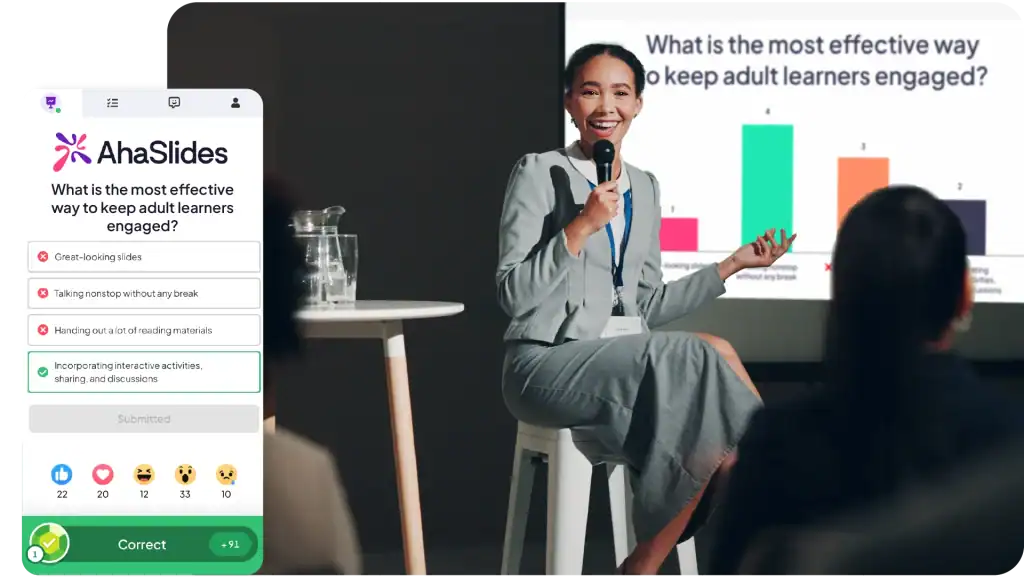
Корак 4: Испоручите са аутентичним самопоуздањем

Чак и бриљантан садржај пропада због лоше презентације. Ево како професионалци приступају тренутку истине:
Вежбајте као да вам каријера зависи од тога (јер би могла)
Увежбајте своју петоминутну презентацију најмање 5-7 пута. Користите тајмер. Снимите се и одгледајте поново – болно је, али непроцењиво. Вежбајте док не будете могли природно да изнесете садржај без читања слајдова. Мишићна меморија вас носи са нервозом.
Технике испоруке које разликују аматере од професионалаца
- Вокална разноликост: Мењајте темпо, висину тона и јачину звука. Стратешки правите паузе ради нагласка – тишина је моћна.
- Говор тела: Уживо, користите отворене гестове и крећите се са намером. Пред камером ограничите гестове (они их појачавају) и одржавајте контакт очима са објективом.
- Приповиједање прича: Укључите кратак, релевантан пример или анегдоту. Приче повећавају памћење 22 пута у поређењу са само чињеницама.
- Енергетски менаџмент: Ускладите своју енергију са својом поруком. Ентузијастичан за инспирацију, одмерен за озбиљне теме.
- Техничка спремност: Тестирајте опрему 30 минута раније. Имајте резервне планове за проблеме са повезивањем.
Тајна везе са публиком
Замислите своју презентацију као разговор, а не као наступ. Одржавајте контакт очима (или гледајте у камеру за виртуелне презентације). Потврдите реакције. Ако се спотакнете, направите кратку паузу и наставите – публика опрашта аутентичност, али не и роботско читање слајдова.
Тајни савет: Не знате да ли ваша петоминутна презентација има утицај? Користите алат за повратне информације да би одмах прикупио расположење публике. Потребно је минималан напор, а успут ћете избегавати губљење вредних повратних информација.
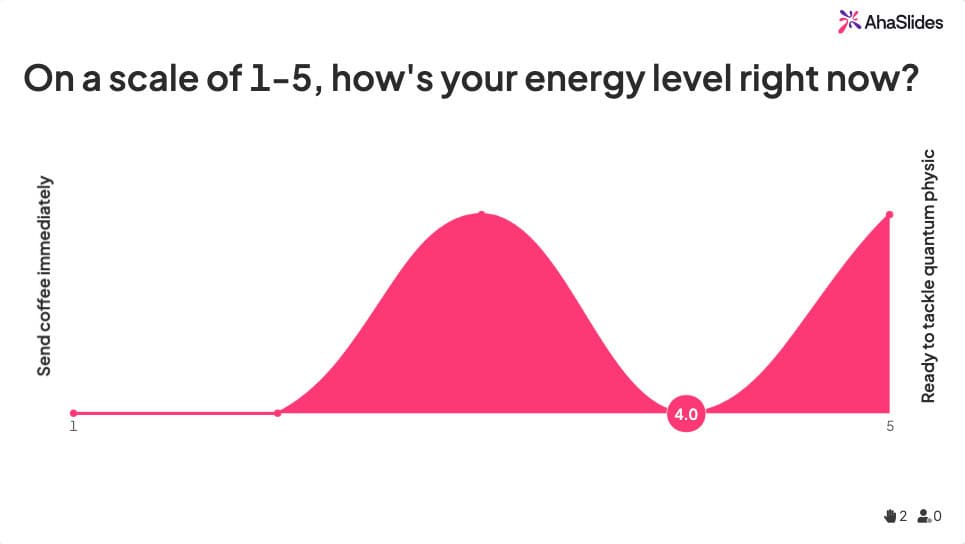
5 уобичајених грешака приликом држања 5-минутне презентације
Савладавамо и прилагођавамо се путем покушаја и грешака, али лакше је избећи почетничке грешке ако знате шта су оне👇
- Током времена: Публика примећује. То сигнализира лошу припрему и непоштовање њиховог распореда. Вежбајте до краја у 4:45.
- Преоптерећење слајдова: Слајдови са пуно текста терају публику да чита уместо да слуша. Одмах губите њихову пажњу.
- Вежбање прескакања: „То је само 5 минута“ је опасно размишљање. Кратки формати захтевају ВИШЕ вежбе, а не мање.
- Трудим се да покријем све: Дубина побеђује ширину. Један јасан увид који одјекује је бољи од пет тачака којих се нико не сећа.
- Игнорисање ваше публике: Прилагодите садржај њиховим интересовањима, нивоу знања и потребама. Генеричке презентације никада не стижу.
Примери презентације од 5 минута
Проучите ове примере да бисте видели принципе у акцији:
Вилијам Камквамба: 'Како сам упрегао ветар'
ovo ТЕД Талк видео представља причу о Вилијаму Камквамби, проналазачу из Малавија који је, као дете у сиромаштву, изградио ветрењачу за пумпање воде и производњу струје за своје село. Камквамбино природно и директно приповедање било је у стању да очара публику, а његова употреба кратких пауза за људе да се смеју такође је још једна одлична техника.
Сузан В. Фиск: 'Важност бити концизан'
ovo видео за обуку нуди корисне савете за научнике да структуришу свој говор тако да одговара формату презентације „5 минута брзо“, који је такође објашњен у 5 минута. Ако планирате да направите брзу презентацију „Како да“, погледајте овај пример.
Џонатан Бел: 'Како створити сјајан бренд'
Као што наслов сугерише, говорник Џонатан Бел ће вам дати корак-по-корак водич о томе како створити трајно име бренда. Он прелази директно на ствар са својом темом, а затим је раставља на мање компоненте. Добар пример за учење.
ПАЦЕ фактура: '5 мин Питцх ат Стартупбоотцамп'
Овај видео показује како ПАЦЕ фактура, старт-уп специјализован за обраду плаћања у више валута, био је у могућности да јасно и концизно представи своје идеје инвеститорима.
Вилл Степхен: 'Како звучати паметно у свом ТЕДк говору'
Користећи духовит и креативан приступ, Вилл Степхен'с ТЕДк Талк води људе кроз опште вештине јавног говора. Обавезно погледати да бисте своју презентацију претворили у ремек-дело.
Спремни да креирате презентације које заиста ангажују? Почните са интерактивним алатима за презентације компаније AhaSlides и трансформишите своју следећу петоминутну презентацију од заборављиве до незаборавне.


